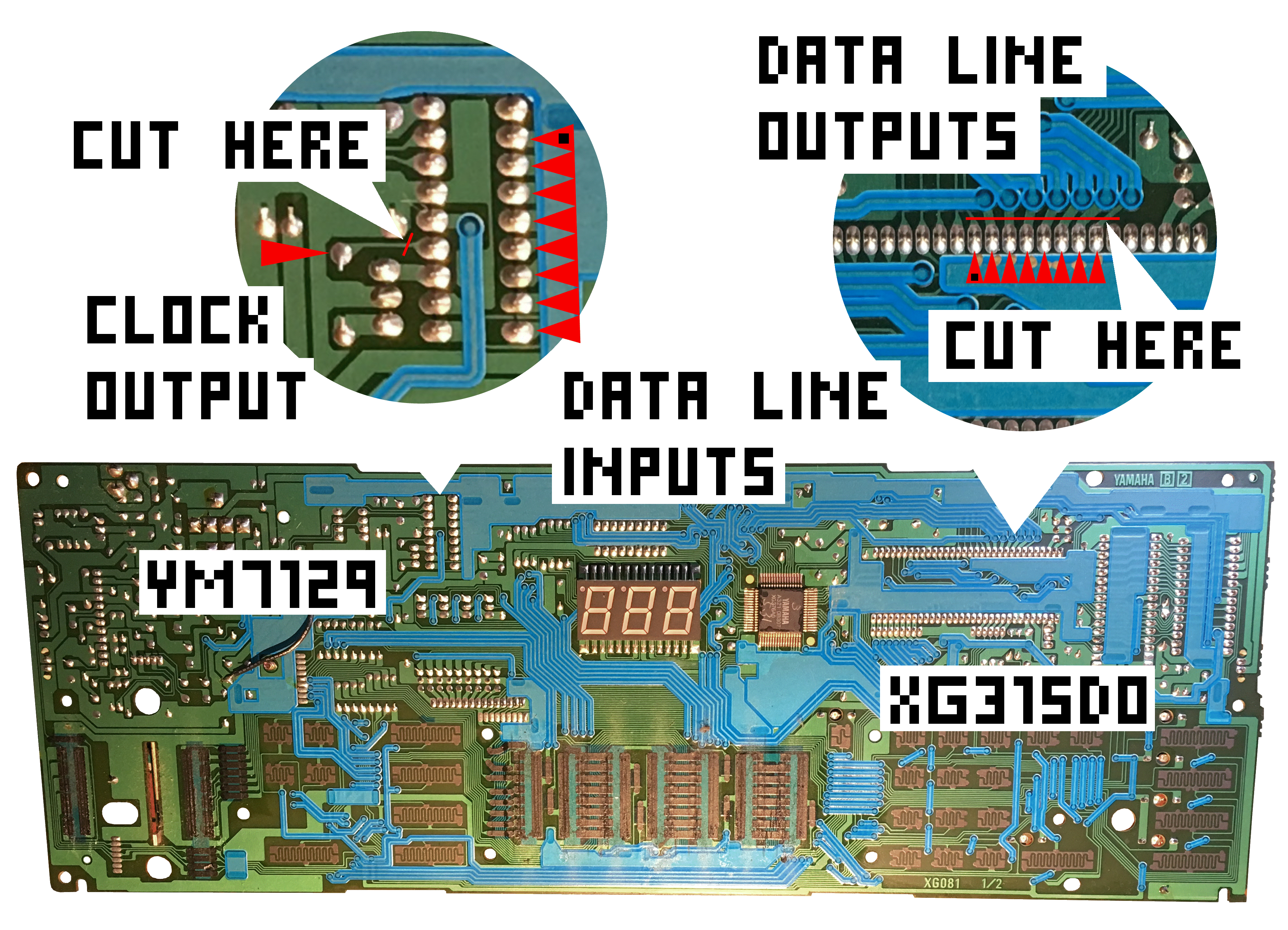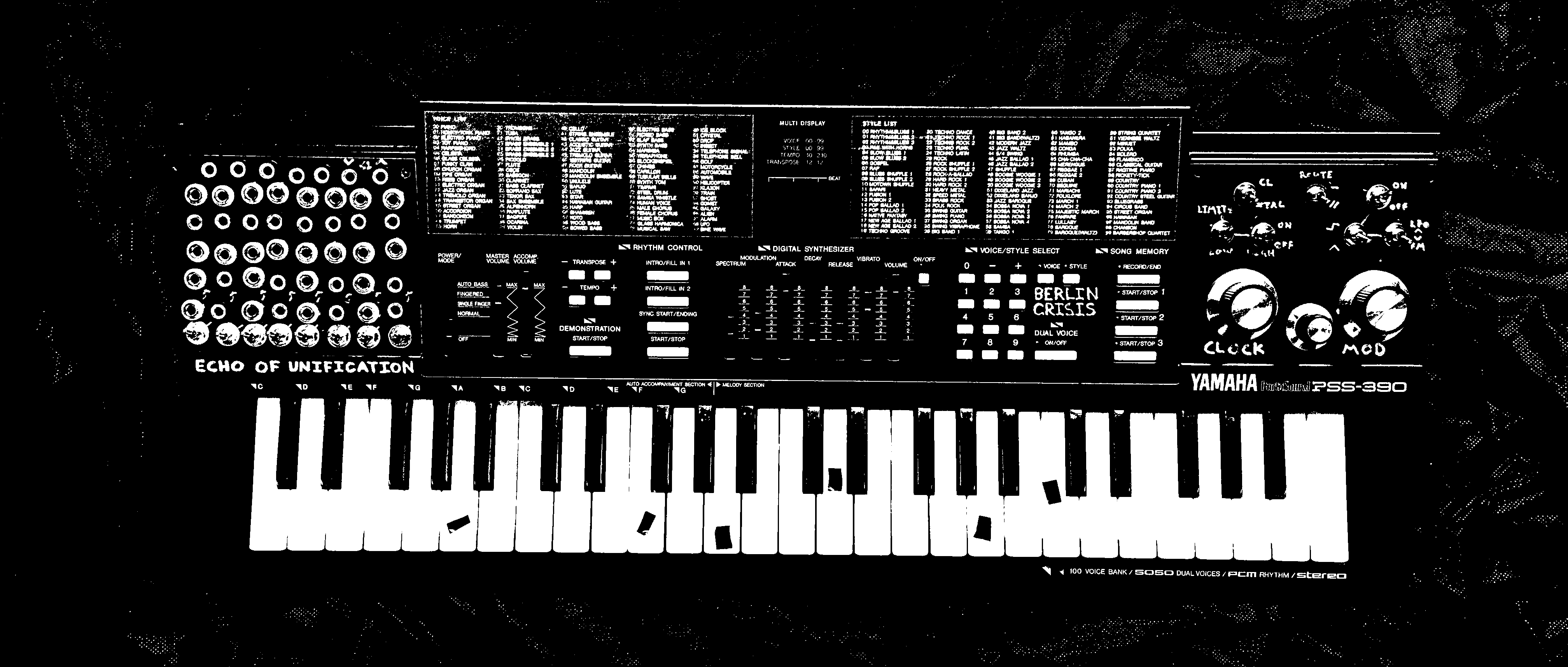DATA LINES
The data lines are 8 copper traces used to relay 8-bit digital instructions from the XG315D0 chip to the chip responsible for actual FM synthesis operations, the YM7129. Cutting and rewiring these traces scrambles the signals received by the YM7129, forcing it to create new and exciting sounds.The YM7129 is connected to the data lines through pins 11 to 18 on the chip, which are in turn connected to pins 51 through 58 on the XG315D0. It is easiest to cut them near the pins of the XG315D0, do this with a sharp craft knife or scalpel and take care not to damage any other traces. Use a multimeter to make sure that all the pins are totally disconnected.
The keyboard won’t start up if the data lines are not connected correctly, so make sure that however you reconnect these you can set them back to normal easily. I wired them back together through switches with each of the pins also connected to a banana jack. Also make sure that they are reconnected the right way round, the dot on the diagram below indicates the correct order for the pins.
Similar modifications to this can be done to almost any FM Yamaha keyboard including the DX100 and a good number of the other PSS and PSR series keyboards.

CLOCK INJECTION
The speed of the entire synthesiser including the pitch of the keyboard and drum sounds is set by a crystal resonating at a constant frequency. Swapping this with a variable frequency oscillator allows the pitch to be adjusted, and extreme frequencies will make the keyboard crash into harsh glitchy soundscapes. The crystal itself is a rounded light blue blob with three pins. There are two on the board but the interesting one is right next to the YM7129. Cut the trace connecting to pin 4 of the YM7129 (shown on the diagram above) to disconnect the crystal.
The oscillator is based around the LTC1799, a 555 derived timer designed for high frequency applications. Circuitbenders.co.uk has a great tutorial for constructing a simple oscillator with the chip and also sells the LTC1799 presoldered to a DIP adapter if you don’t fancy the SMD soldering. I also added a 40106 oscillator and connected it to the frequency control of the LTC1799 though a vactrol, adding vibrato and FM effects.
Like the data lines, this is a generic modification and can be applied to any electronic device with a crystal.
